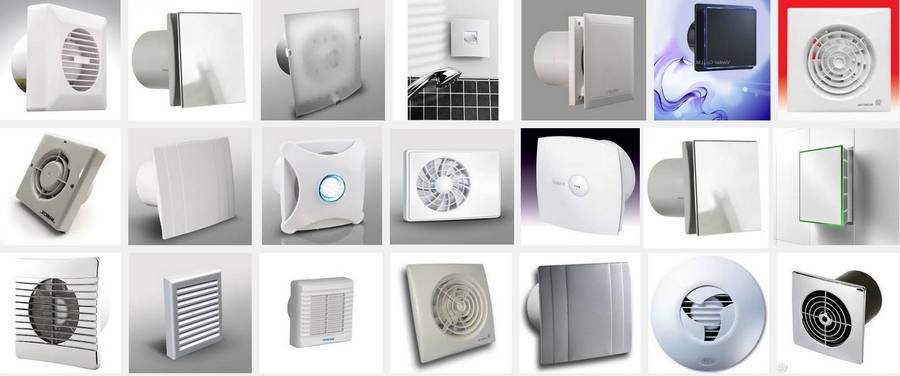3.20. Secrets of Installing Exhaust Systems in Bathrooms and Toilets
Effective ventilation is essential not just in kitchens, but also in bathrooms and toilets. It’s crucial to prevent unpleasant odors and excessive moisture that leads to mold and fungal growth.
Typically, natural ventilation is provided in the architectural design of houses, functioning through temperature differences. It doesn’t require electrical wiring and is easy to set up. However, its capacity might be insufficient at times, necessitating the installation of forced ventilation.
In bathrooms and toilets, this is achieved by installing a fan in the ventilation opening. Electrical wiring and various sensors for activation are connected to it.
Amateur installation of exhaust systems can lead to issues like:
- Strong drafts caused by exhaust fans with automatic activation without a switch in the bathroom or toilet;
- Inappropriately set automatic shutoff timers causing discomfort;
- High noise levels from the fan.
To avoid these mistakes, let’s discuss how to properly select and calculate a forced ventilation system.
Choosing the Fan
Before installing an exhaust fan, it’s advisable to first check the ventilation system. A simple way to do this is using a lit match; hold it near the vent and observe the flame’s direction. If it flickers, there’s airflow; if not, a thorough check is needed.
Select a fan according to the size of the ventilation duct. Then, calculate its efficiency, which should be at least six times the room’s volume to ensure proper ventilation.
Pay attention to the fan’s moisture protection rating, denoted as IP followed by two numbers indicating the protection level. For bathrooms, IP45 is recommended.
The noise level is also important. A fan that suddenly starts with a loud noise can be startling, especially in quiet settings. The maximum acceptable noise level should be around 35 decibels.
Sensors and Automatic Activation
In both apartments and houses, there are pre-existing channels for ventilation and wiring. Some might directly connect the exhaust fan to the light switch, which is not advisable. It can create an unnecessary airflow and lead to cold drafts, especially while bathing.
Instead, install a separate switch for the exhaust in the bathroom. Alternatively, opt for a fan with a timer. However, don’t set it for too short a period, as it won’t allow complete ventilation.
Modern exhaust systems come equipped with motion and humidity sensors. Motion sensors can be combined with a timer. However, fans with humidity sensors are not recommended as they tend to activate during showers, causing cold drafts.
For bathrooms or toilets, it’s best to have a separate switch for the exhaust fan, allowing it to be turned on only when necessary, saving energy. Fans with automatic shutoff timers are advisable, particularly in homes with children or the elderly who might forget to turn off appliances.
Remember, exposed electrical wiring in bathrooms is strictly prohibited! The installation of the exhaust fan is relatively simple, but ensure that the switch is installed on the live wire.
If you encounter any issues related to bathroom or toilet ventilation, feel free to consult me, Olesya Blashchenko, a designer. I will draft and calculate an optimal electrical installation scheme for the forced ventilation system and assist in selecting the necessary appliances, ensuring compliance with safety standards and regulations.






